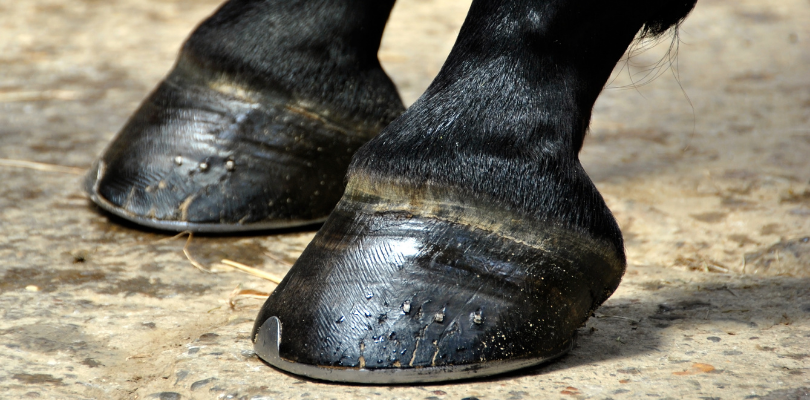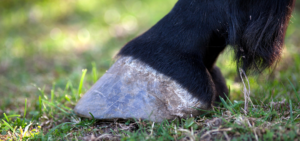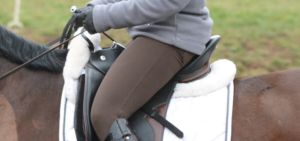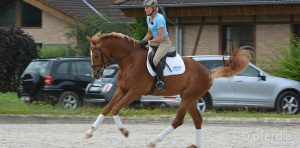Summary
- What is a Horse Farrier?
- To Shoe, or Not to Shoe?
- What Circumstances Call for Horses to be Shod?
- The Potential for Risk
- How to Prepare a Horse for the Horse Farrier?
- Preparing Your Horse to Lift His Feet
- A Biological Perspective
- Teamwork Makes the Dream Work
What is a Horse Farrier?
A horse farrier is a professional who is trained to care for equine feet. He or she possesses knowledge in both biology and anatomy and has studied the physiological needs and makeup of horses at length. Many of these specialists have attended college, or some type of institution in preparing for their field.
Horse farriers trim hooves, shoe horses, address injuries and congenital deformities. They can repair broken hooves, correct abnormalities resulting from overuse or previous jobs done wrong, and can correct any shoeing issues a horse may be experiencing. The work of the horse farrier is the work of a job that is both difficult and taxing, but one that is absolutely essential in maintaining and ensuring any horse’s well-being.
To Shoe, or Not to Shoe?
The topic of shoeing horses has been one of great debate over the years, and one that will likely continue to split sides in years to come, though the paradigm is certainly shifting in the direction of not shoeing.
From a historical standpoint, horse shoeing became popularized out of necessity. Once domesticated, horses were commonly used as a primary mode of transportation and as farm laborers, and this workload demanded some type of protection from the rigorous abuse horses’ hooves were taking on a daily basis; hence, the introduction of the horseshoe, and with it was born the need for horse farriers.
However, the industrial revolution and technological advances have made it so that horses are more commonly used for sporting or recreational purposes which by comparison are far less taxing on the animals’ feet. As a result, fewer and fewer owners are calling local horse farriers, instead opting to go with a more natural approach to horse hoof care and allowing their horses to barefoot it, or go without any shoes at all.
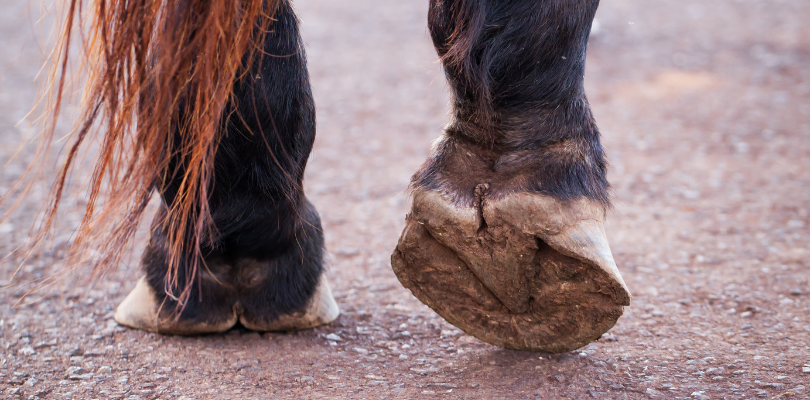
What Circumstances Call for Horses to be Shod?
Allowing a horse to go without any shoes at all is a practice now known as barefooting, and many modern equestrians prefer this approach due to its natural appeal and risk reduction associated with poor shoeing or a botched shoeing job. Nothing is worse than watching a horse’s decline if forced to suffer with poor footwork.
Though the trend is certainly shifting in the direction of barefooting, there are still special circumstances that see horses much healthier, and much happier, when they are equipped with shoes. Horses with a tremendous workload, for example, or horses that reside in icy, colder climates may still need protection for their feet, and many individuals do still utilize the common horseshoe, but there are alternatives such as specialized boots, and the practice of gluing shoes on that many advocates argue is far more humane and far safer than driving nails into the hooves of their horses.
And even though fewer people are opting for the traditional horseshoe, that by no means makes the job of the horse farrier obsolete. Horse farriers are still utilized for trimming and shaping purposes, horse farriers are still called upon to address a variety of hoof injuries horses experience in the ring or on the trail, and horse farriers are certainly sought after for their expertise and knowledge base in simply providing horses with a higher quality of life.
The Potential for Risk
There is nothing that poses a greater danger to a horse than the loss of mobility. Naturally, over time, horses will experience degeneration, just as any animal will in their later years, but the consequences of lameness in a younger horse are astronomical. Some horses are even euthanized upon losing their soundness.
Many dangers exist that can be caused, or further exaggerated, by poor shoeing. One common danger relates to prolonging resetting. Horses that have been shod should have their hooves checked by a horse farrier every 4-6 weeks. This allows the farrier to make any necessary adjustments, and also to assess the setting of each shoe.
Owners who exceed that time frame expose their horses to the risk of hooves that have grown abnormally around the shoe itself, causing pain, swelling, soreness, and at times even greater risks like cracked hooves or circulatory disruptions.
Another tragic risk of shoeing relates to a horse’s natural biological needs. Horses were not born needing shoes. In the wild, a horse will move enough to maintain healthy hooves through travel alone; this is the way they are designed.
When a horse’s hoof hits the ground, the entire hoof must absorb the concussion from that impact. Unshod, the horse’s hooves absorb the shock in such a way that the pressure is distributed evenly, or uniformly, placing less stress upon the hoof itself as no portion of the horse’s foot is enduring shock that is greater than what it was designed to take.
When you ask your horse farrier to shoe your horse, however, the hoof must endure an entirely new type of concussion–one that it was simply not designed to ever have to endure. With horse shoes on, the surface area of the portion of the horse’s hoof that is striking the ground is exponentially reduced, forcing just the rim where the shoe itself has been placed to endure the impact of the entire weight of the animal as each leg strikes the ground. This uneven distribution can result in cracked hooves, leg and joint issues from excessive exposure to force, and even navicular syndrome.
Navicular Syndrome, or NS for short, is an often fatal condition caused by shoes that do not allow a horse’s hooves to flex. As a result of the animal’s feet being denied the very necessary ability to expand and contract during movement, the hoof’s internal structures become damaged—from lack of circulation, external factors, and the overall restricted movement. Irreparable damage frequently results in the animal being put down, a completely avoidable fate that no horse should ever be forced to endure.
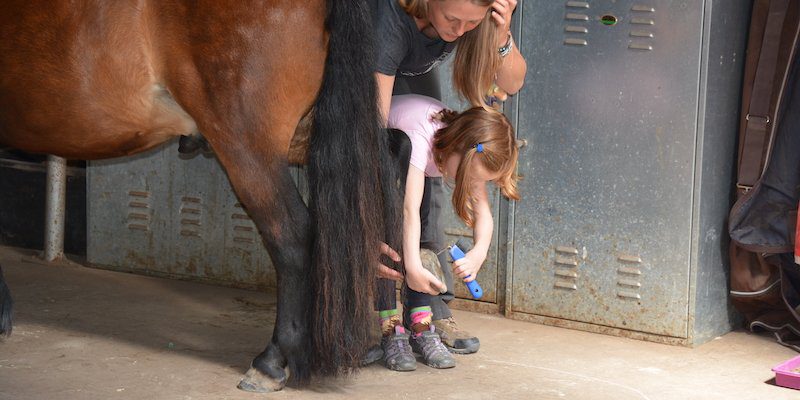
How to Prepare a Horse for the Horse Farrier?
Much like trailer loading, handlers must prepare horses for their first visit from the horse farrier. These sessions need not be excessively time-consuming, but they are necessary to train a horse to set them up for success.
The sequence and scope is essentially hierarchical, as one skill builds upon the next, skills that will naturally translate into a variety of other tasks. Of course, leading is the first skill, as a horse will need to be led to the location where he will be handled by his new horse farrier.
Tying and standing is also essential if the farrier is to be able to work on the prospect. Horses will need to have experience being tied and being capable of standing relatively still for an extended period of time.
Preparing Your Horse to Lift His Feet
There are several key considerations to bear in mind as you are working with your horse to train him to lift his feet. Of the utmost importance is patience. Like any exceptional training protocol, the process should be seamless. Horses, like humans, all learn at their own pace, and it is the handler’s job to adjust to this pacing.
Begin with desensitization, being able to stand proximate to the legs, gradually touching to placing small amounts of pressure on, to actually lifting the legs to prop the hooves on your knee or thigh.
A Biological Perspective
Another key consideration that one must remain cognizant of is the horse’s natural instincts. As flight animals, these innate biological and physiological reactions play a monumental part in the learning process.
As prey animals, horses are at all times keenly aware of the amount of danger that they are putting themselves into. As trainers, many of us ask horses to do things that they are naturally uncomfortable doing on a daily basis. Asking a horse to give his foot is much like asking a human to tie his hands behind his back.
Asking a horse for his foot is asking him to place himself in an extraordinarily uncomfortable situation, especially upon introduction, as without all four feet firmly planted on the ground, he is sacrificing a tremendous amount of his security and safety. His ability to flee readily is compromised, a fact that he is hyperaware of, so be patient as you introduce him to this task and familiarize him with your horse farrier.
If you want reduce stress in your horse, TTouches for example are a great way to promote relaxation. Here you can learn more about the Tellington TTouch Method.
Teamwork Makes the Dream Work
Horse farriers are indispensable members of a team all working together to ensure the safety and wellbeing of any given horse. Their work is taxing, can at times be frustrating, but few jobs in the field of the equestrian sciences are more important. These individuals ensure that horses can go on to continue to move with the grace, ease, and joy that breathes life into their very being, and isn’t that joy what brought us all here in the first place?

